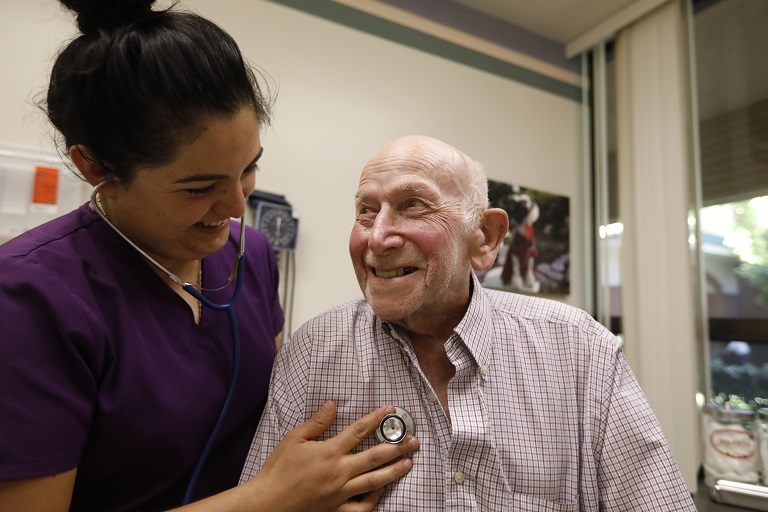The number of cost-burdened older adults is at an all-time high, found a new report from the Joint Center for Housing Studies of Harvard University. “Housing America’s Older Adults 2023” reports that in 2011, 11.2 million older adults (about 33% of older adults) spent more than 30% of their income for housing, the federal standard for housing affordability. More than half of these households spend more than 50% of their incomes on housing.
In addition to housing affordability and accessibility needs, the report also looks at who can afford the health and other support services many people need as they age.
About 1.4 million older adults live in nursing homes and, given that “nursing home residents are older and the population of individuals aged 80 and over is set to soar, demand will grow for residential settings that include the services and supports of the types provided by nursing homes,” the report says.
As predicted, homeownership rates among homeowners have declined somewhat and are expected to continue to do so. However, homeownership rates among older adults are the highest compared to other age groups but there are large racial disparities. For example, there is a 19 percentage point homeownership gap between black and white households. Homeownership rates matter for aging services, the report points out, because it is through the accumulation of equity that brings much wealth later in life. In 2022, older homeowners held nearly 50 times the net wealth of older renters, $499,000 compared to $10,100.
Previous trends of more homeowners carrying mortgage debt after age 65, and carrying more of it, continue, the report says. For homeowners aged 80 and over, for whom the share with mortgages jumped from 3% to 31% between 1989 and 2022, the median mortgage debt increased from $9,000 to $79,000. Black homeowners (50%) are more likely to have mortgage debt than white homeowners (39%) and Hispanic homeowners (29%).
Housing cost burdens become more and more common as people age, the report says. While older adult homeowners face housing cost burdens, they are much more likely for older adult renters. In 2021, 56% of older adult renters faced housing cost burdens while 26% of older adult owners did. At least half of all older adult renters in 88 of the nation’s largest 100 metro areas spent more than half of their incomes on housing, or had what’s called severe housing cost burdens.
The report details the wide divide between available affordable housing and the need for it. As HUD’s reports have documented, 3.7 million older adult renters who qualify for housing assistance do not receive it because the programs are too small to meet the need. The report calls for the expansion of HUD’s Section 202 Supportive Housing for the Elderly program to meet existing and ballooning demand.
The report also looks beyond housing to the cost of care, specifically the cost of at-home and assisted living care and found that many older adults cannot afford long term care services. In a Special Report to the report, the affordability of long term care services for households with low and moderate incomes is reviewed. The report identifies “GAPS” households, which it defines as 75+ single households with incomes at or above 50% of area median income in 97 metro areas. According to the report, tapping into home equity is a solution for some GAPS households, but not all. Of the GAPS households, only 72% own their homes outright and have at least $250,000 in equity that they could use to fund assisted living for some number of years, the report says.

 Shutdown Week Three: Impact of Ongoing Closure on Affordable Housing
Shutdown Week Three: Impact of Ongoing Closure on Affordable Housing


